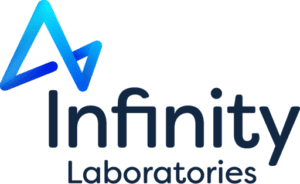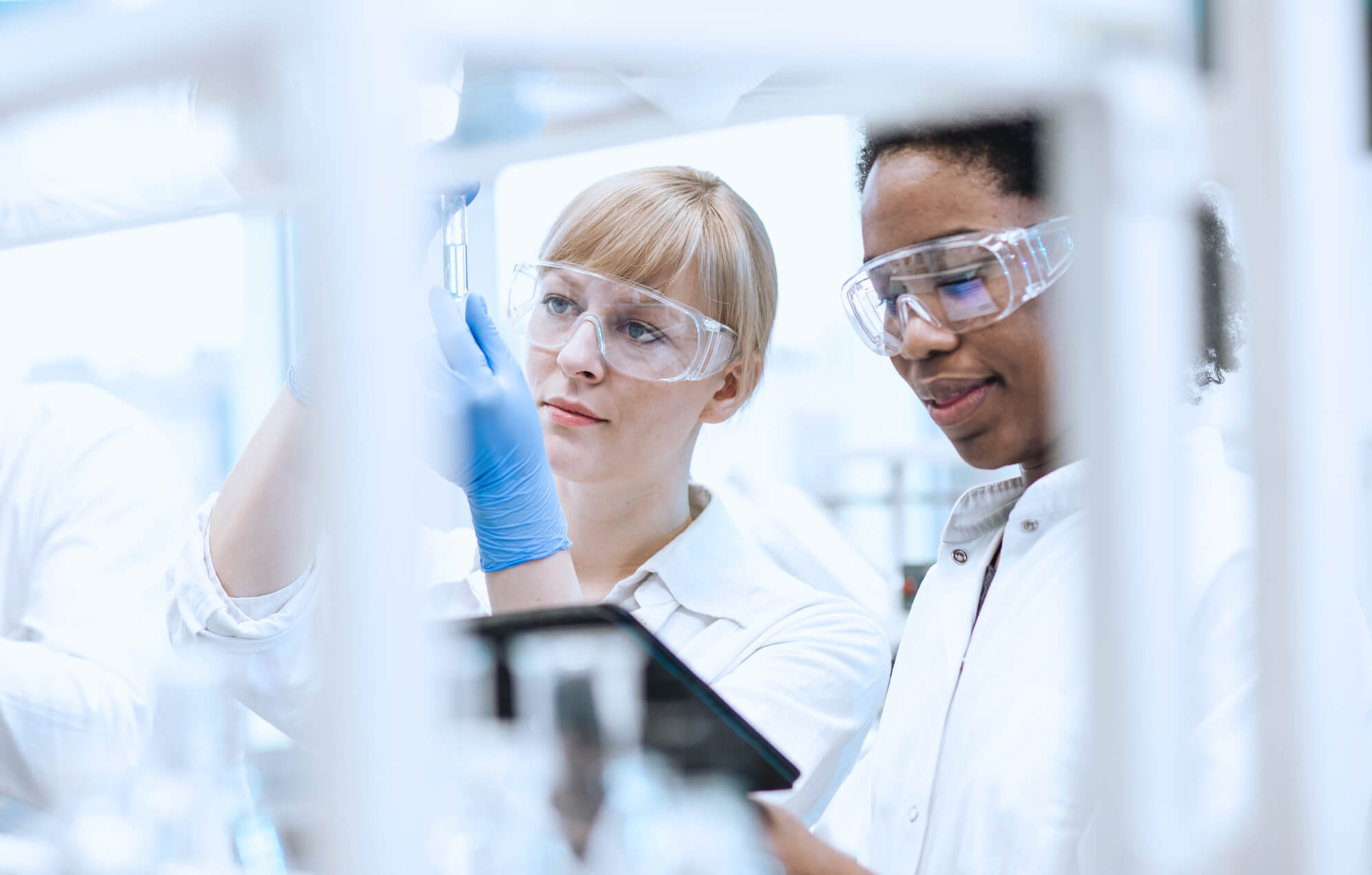Disinfectant efficacy studies demonstrate that a pharmaceutical or medical device manufacturer’s regular cleaning process effectively controls contaminants to ensure patient safety and compliance with regulatory requirements. A critical aspect of any environmental monitoring services offering, successful disinfectant efficacy testing include five essential components:
- The microorganisms used should reflect those commonly recovered from the pharmaceutical manufacturing facility.
- The target logarithmic reductions to be achieved by the disinfectant should reflect the levels of contamination typically seen within the pharmaceutical facility.
- The surfaces challenged with microorganisms should be representative of the materials found in pharmaceutical cleanrooms.
- The test establishes the ideal contact times for disinfectants.
- The test is summarized in a final report that the manufacturer can easily understand.
1. Selecting the Appropriate Microorganisms to be Tested
1. Selecting the Appropriate Microorganisms to be Tested
Selecting the appropriate microbes to be tested in the disinfectant efficacy study is critically important for the usefulness of the results. The microbial controls should be clinically significant, include the US Pharmacopoeia or other reference standard cultures, and include Gram-positive, Gram-negative, fungal, and spore-forming organisms. Including cultures isolated from the facility in the environmental monitoring program is also important.
As part of routine cleanroom validation services, Infinity Laboratories challenges surfaces with at least one of each type of organism — a Gram-positive coccus, a Gram-negative rod, a spore-forming Gram-positive rod, a yeast, and a mold. When a facility can provide specific organisms that may be trending in environmental monitoring data, Infinity includes those in the protocol to demonstrate the chosen disinfectants are effective against known environmental flora of the facility. In the case of a new facility where environmental isolates are not immediately applicable, Infinity’s team utilizes industry-accepted ATCC strains.
2. Validating the Disinfectant Achieves Appropriate Logarithmic Reductions
2. Validating the Disinfectant Achieves Appropriate Logarithmic Reductions
With target levels of microbial kill (log reduction), the criteria should reflect the regulatory recommended permitted maximum levels of microorganisms in the cleanroom and then track the level of kill through an appropriate logarithmic reduction.
It is important to note that test organisms, whether type cultures or those isolated from the plant, will be grown as healthy laboratory cultures and challenged while in the logarithmic phase of growth. Such organisms are typically more resistant than organisms within the cleanroom environment, which are often not growing and subject to external stress factors. A facility that does not achieve the log reduction it needs for certain combinations may need to alter its cleaning regimen.
Infinity prepares all organisms according to internal work instructions and documents all preparations in protocol attachments. When challenging the effectiveness of disinfectants or sporicides as part of its cleanroom environmental monitoring services, Infinity inoculates high enough that a 3-log reduction can be demonstrated when required.
Next, the disinfectants, sanitizers, and sporicides the manufacturer provides are prepared exactly as the manufacturer’s procedure dictates to ensure full mimicry of their cleaning processes. Disinfectant manipulation can include preparation of dilutions from concentrate, opening and holding disinfectants for a certain number of days prior to testing, opening and simulating the use of disinfectants for a certain number of days, or opening and using disinfectants the same day as testing. All disinfectant preparation is documented in protocol attachments.
3. Selecting the Appropriate Surfaces to be Tested
3. Selecting the Appropriate Surfaces to be Tested
A comprehensive survey of the materials comprising the clean room surfaces (floors, walls, windows) and equipment (such as stainless steel, acrylic, polyvinyl chloride, etc.) present in the facility and which could potentially be exposed to the disinfectant is a necessary component of any disinfectant efficacy testing.
Infinity’s cleanroom validation services best practice involves testing all surface materials in a manufacturer’s cleanrooms. Some surfaces commonly challenged for disinfectant efficacy include 304 stainless steel, 316 stainless steel, glass, HDPE, epoxy flooring, epoxy-painted walls, vinyl, varying glove material, and countless hard and soft plastics.
Infinity utilizes 2” x 2” coupons of each chosen surface provided by the client to understand the organisms present and validate that, if effective, the disinfectants and protocols in place promote a safe environment.
4. Establishing the Best Contact Time
4. Establishing the Best Contact Time
When sanitizer is left in contact with surfaces for too long, it can degrade and decline in efficacy. Sometimes, facilities try to speed up the disinfectant process by reducing the specified contact time. However, a contact time on a surface that is too short can also reduce the efficacy of a sanitizer. Other mitigating factors include the facility’s humidity and temperature. Drastic fluctuations in either can influence the type and number of organisms present and impact a disinfectant’s effectiveness in day-to-day use.
Infinity’s cleanroom validation services prepare the disinfectants, sanitizers, and sporicides the manufacturer provides exactly as the manufacturer’s procedure dictates to ensure full mimicry of their cleaning processes. Disinfectant manipulation can include preparation of dilutions from concentrate, opening and holding disinfectants for a certain number of days prior to testing, opening and simulating the use of disinfectants for a certain number of days, or opening and using disinfectants the same day as testing. All disinfectant preparation is documented in protocol attachments. Infinity’s environmental monitoring services ensure the accurate use of disinfectants, sanitizers, and sporicides, replicating the manufacturer’s cleaning procedure and including mechanical actions and contact times.
Multiple application methods and contact times can be challenged on the same surface to determine the best-case scenario for insight into possible cleaning procedure improvements.
5. Final Disinfectant Efficacy Testing Report from Infinity
5. Final Disinfectant Efficacy Testing Report from Infinity
This reviewed data packet is then compiled into a final report that compiles all results, including percent recoveries from the neutralization efficacy study and log reductions from the disinfectant efficacy study, into one document. The final report first revisits the background of the study, including a summary of the surfaces, organisms, disinfectants, sanitizers, and sporicides challenged. The results of each parameter from neutralization and disinfectant efficacies are listed in tables. After all results tables, a discussion section summarizes the data analysis against the agreed-upon acceptance criteria for inoculum, percent recoveries, and log reductions for each disinfectant, sanitizer, and sporicide. All exceptional conditions, if needed, are also discussed in this section to summarize the occurrence, the agreed-upon modifications, and the impact of these modifications on the efficacy of the cleaning processes.
The conclusion of the final report includes a statement of the acceptable combinations of disinfectant, sanitizer, and sporicide, hold times, contact times, and surfaces when challenged with which organisms for that facility.
Once the final report has been reviewed, a draft is provided to the manufacturer, encouraging review and collaboration, if needed. This collaboration ensures that the final report can be easily read and understood so that the manufacturer can convey and thoroughly explain the study results to interested parties.
Disinfectant Efficacy Studies are Vital for Effective Environmental Monitoring Programs
Disinfectant Efficacy Studies are Vital for Effective Environmental Monitoring Programs
By meticulously selecting appropriate microorganisms, validating logarithmic reductions, choosing representative surfaces, establishing optimal contact times, and compiling comprehensive final reports, Infinity exemplifies best practices in environmental monitoring services.
Infinity’s disinfectant study process ensures transparency, reliability, and practical applicability of study findings, ultimately enhancing cleanliness and safety standards within pharmaceutical facilities.
Want to learn more? Access our article, “Complying with USP Disinfectant Efficacy Guidelines in Pharmaceutical Manufacturing Environments.”


